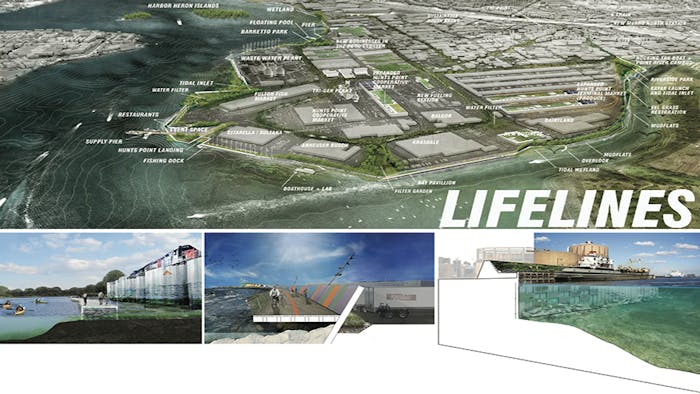The Hunts Point peninsula is a single square mile of the South Bronx in New York City, and serves as the hub of the food supply for 22 million people in the Northeast U.S.
Its $5 billion annual economy provides over 20,000 jobs to the region. Directly adjacent to the industrial area is a vibrant residential community cut off from its waterfront by thousands of daily truck trips. Residents of Hunts Point are located in the poorest congressional district in the United States and have little access to fresh food from the wholesale markets, often exasperating health disparities.
Although Hurricane Sandy’s arrival at low tide spared much of Hunts Point, the area is nonetheless vulnerable to flooding. Climate change and sea level rise are threat multipliers to a neighborhood already challenged by poverty, isolation, and environmental degradation.
Project Details:
Location: Hunts Point, Bronx, NYC
Award: $20 Million
Implemented By: NYC Mayor’s Office of Recovery and Resiliency, New York City Economic Development Corporation
Source: Rebuild by Design

 11 Sustainable Cities and Communities
11 Sustainable Cities and Communities
 13 Climate Action
13 Climate Action